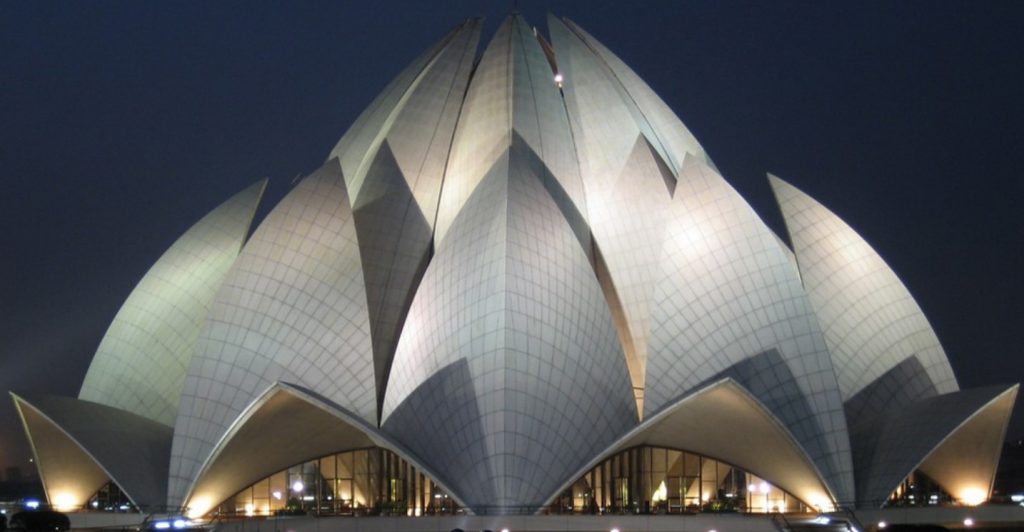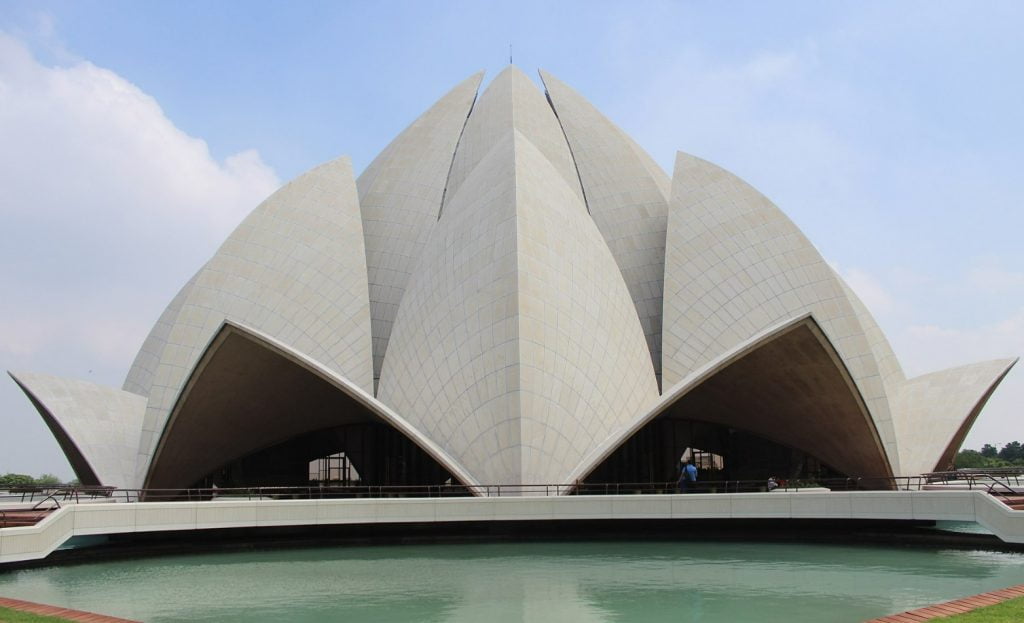The Lotus Temple is a Bahá House of Worship in Delhi, India, that was consecrated in December 1986. It has become a popular tourist attraction in the city due to its flower-like design. The Lotus Temple, like all other Bahá’ Houses of Worship, is open to all, regardless of religion or other qualification. The structure is made up of 27 free-standing marble-clad “petals” grouped in three-petal clusters to create nine sides, with nine doorways leading to a central hall with a height of somewhat more than 34 meters and a capacity of 1,300 people. The Lotus Temple has received multiple architectural honours and has appeared in countless newspaper and magazine publications.

About Lotus Temple
The temple is situated in the town of Bahapur, in New Delhi. Fariborz Sahba, an Iranian architect presently residing in La Jolla, California, was the architect’s inspiration. In 1976, he was asked to design and eventually supervise the construction of the Lotus Temple. The UK company Flint and Neill worked on the structural design for 18 months and Larsen & Toubro Limited’s ECC Construction Group built it for $10 million. When Ardishr Rustamphir contributed the majority of the money needed to acquire this property, he stipulated in his will that his whole life savings would be used for this purpose. Building a greenhouse for research on local flora and flowers was part of the building funding that was saved and used for this purpose.

The Lotus Temple is a Bahá House of Worship in Delhi, India, that was consecrated in December 1986. It has become a popular tourist attraction in the city due to its flower-like design. The Lotus Temple, like all other Bahá’ Houses of Worship, is open to all, regardless of religion or other qualification. The structure is made up of 27 free-standing marble-clad “petals” grouped in three-petal clusters to create nine sides, with nine doorways leading to a central hall with a height of somewhat more than 34 meters and a capacity of 1,300 people. The Lotus Temple has received multiple architectural honours and has appeared in countless newspaper and magazine publications. Solar panels on the temple’s roof generate 120 kW of the temple’s total 500 kW electrical demand. There is a monthly savings of Rs 120,000 thanks to this. Solar electricity is being used for the first time in a Delhi temple.
There are 27 free-standing marble-clad “petals” grouped in clusters of three to create the nine sides of the House of Worship in New Delhi. The Lotus Temple’s nine entrances open into a 34.3-meter-tall central hall that seats 1,300 people and can host up to 2,500 people in total. White marble from Greece’s Penteli Mountain was utilised in the construction of the House of Worship and other ancient structures (including the Parthenon). The Lotus Temple’s 26-acre grounds includes its nine surrounding ponds and gardens.
The Lotus Temple, like all other Bahá’ houses of worship, has a number of shared architectural features, some of which are explicitly mentioned in Bahá’ writings. Because he was the son of the founder of the faith, Abdu’l-Bahá insisted on the nine-sided circular design for a House of Worship. All modern Houses of Worship feature a dome, however this is not considered fundamental to their design. No portraits, sculptures, or images are to be shown in the House of Worship, according to Bahá’u’lláh’s sacred scriptures.
Location
Okhla NSIC and Kalkaji Mandir metro stations are both within walking distance of Lotus Temple.
Address
Lotus Temple Rd, Bahapur, Shambhu Dayal Bagh, Kalkaji, New Delhi, Delhi 110019
Timings
Opens all day, 8 am to 5 pm
Entry Ticket
Entry is free for all people.
Leave a Reply